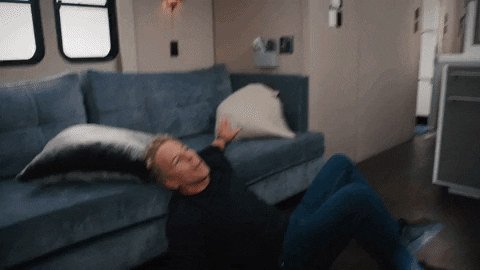- The Daily Tonic
- Posts
- Do you get dizzy when you stand up?
Do you get dizzy when you stand up?
Plus: A little vinegar goes a long way.
DEEP DIVE
Getting Dizzy When You Stand Up?
Have you ever stood up and suddenly felt dizzy or lightheaded? This is a reality for about one in five adults over the age of 60 who have orthostatic hypotension (OH), a condition that results in a quick drop in blood pressure. This condition often leads to dizziness, imbalance, and even fainting, increasing the risk of falls, which can be serious for older individuals.
Our friends at LMNT do a great job breaking down orthostatic hypotension in this write-up (READ HERE), but we have the cliff notes version for you below.
The root cause of orthostatic hypotension generally lies in the nervous system. When you stand, blood tends to pool in the lower body. Normally, the nervous system quickly redirects this blood back to the brain. However, in people with orthostatic hypotension, this response is delayed, leading to symptoms like lightheadedness and loss of balance.
The causes for this can range from neurodegeneration and cardiovascular diseases to side effects of certain medications.
It's important to note that the symptoms of orthostatic hypotension, such as dizziness or fainting, can significantly increase the risk of falls, a major cause of mortality in older adults. It's also linked to higher risks of heart attack, stroke, and other cardiovascular issues.
To diagnose orthostatic hypotension, healthcare professionals may use a tilt table test or have the patient move from lying down to standing. Monitoring changes in blood pressure and heart rate during these tests helps diagnose and rule out other conditions.
The unfortunate thing about OH is that it is commonly a side effect of various medications, making this condition particularly challenging for older adults who may already be managing other health conditions.
So, how can you get in front of orthostatic hypotension? Proper hydration, including fluids and sodium, can help maintain blood volume, stabilize blood pressure, and significantly improve symptoms. For some, medications like Fludrocortisone, Midodrine, or Pyridostigmine may be necessary if lifestyle changes are not sufficient. However, these medications come with their own set of side effects.
The key takeaway? Sometimes, we just stand up too quickly, and a little lightheadedness is to be expected. That said, orthostatic hypotension is a common issue in older adults. For this reason, it can be helpful to understand its causes, symptoms, and management strategies.
Natural methods like proper hydration, compression garments, and sodium intake can be effective first steps. If these strategies are insufficient, pharmacological treatments are available, but they should be considered carefully due to potential side effects. As always, it's important to consult healthcare professionals for a proper diagnosis and personalized management plan. Remember, we are just a newsletter, and this isn’t medical advice.
